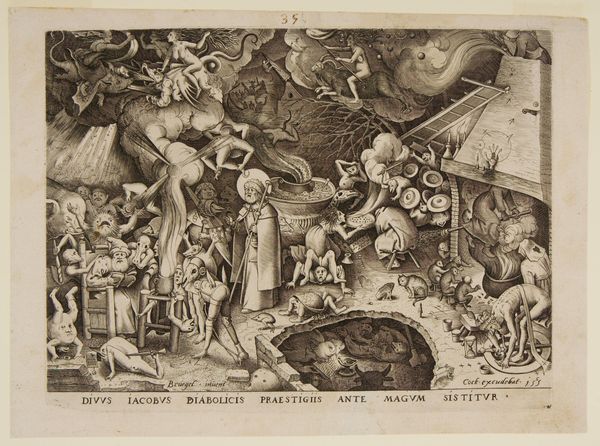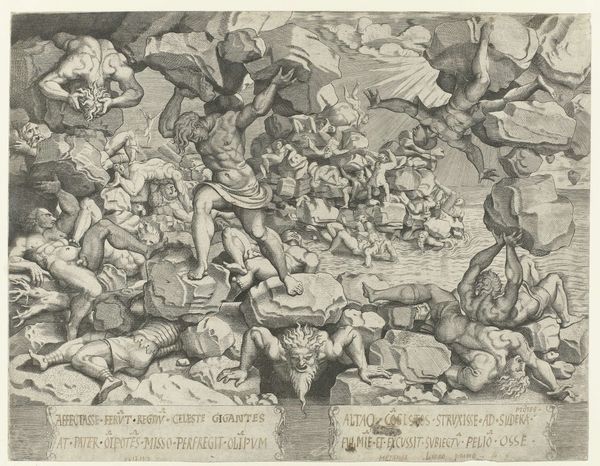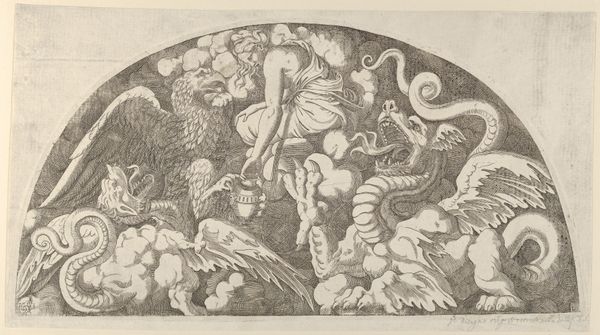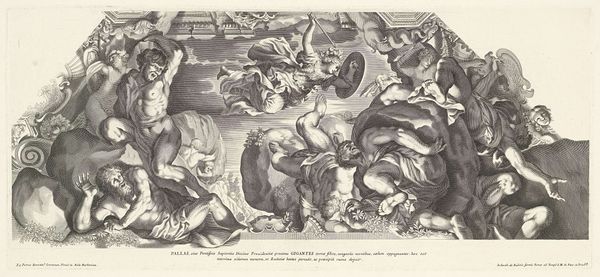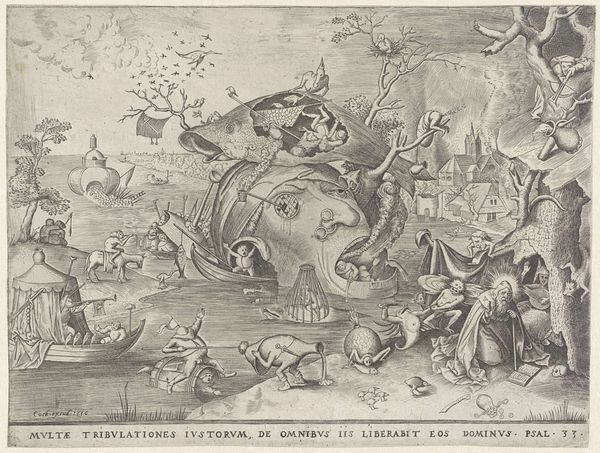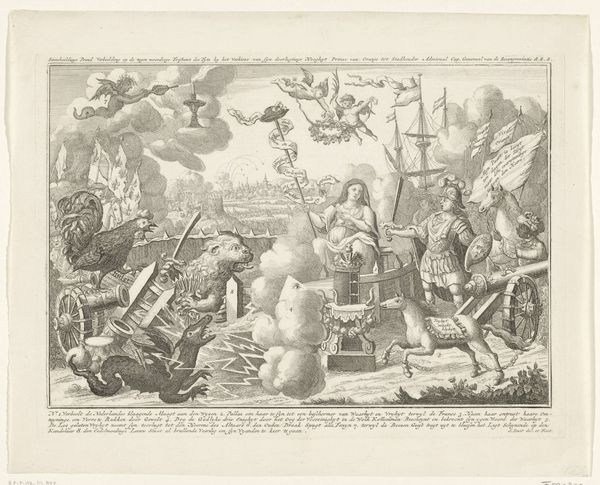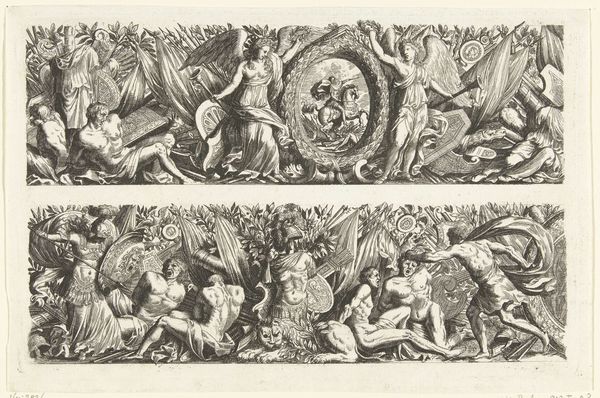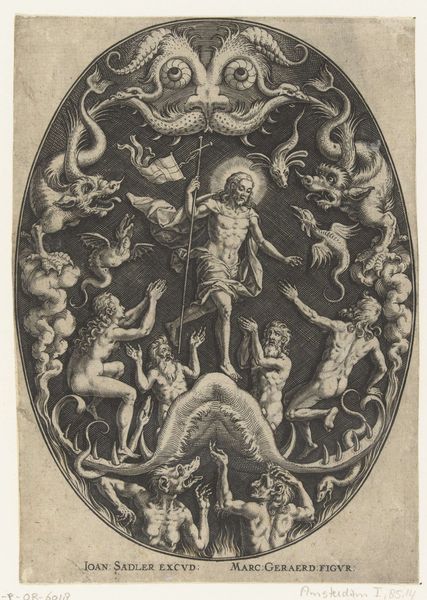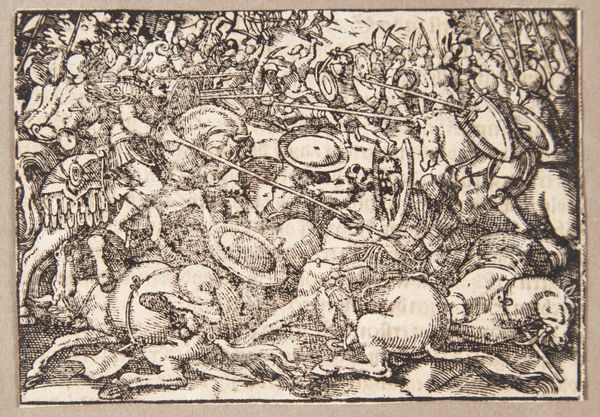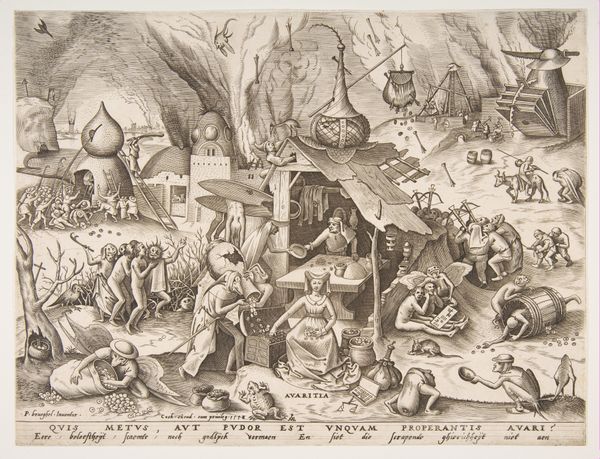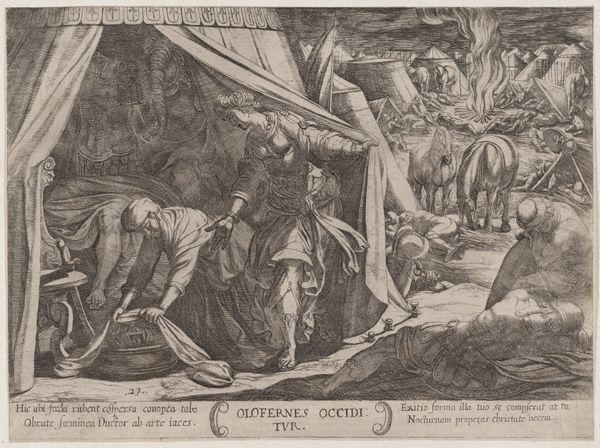
print, engraving
#
allegory
#
pen drawing
# print
#
old engraving style
#
figuration
#
history-painting
#
northern-renaissance
#
engraving
Dimensions: height 233 mm, width 289 mm
Copyright: Rijks Museum: Open Domain
Curator: Pieter van der Heyden's "Christus in het voorgeborchte," dating from 1559 to 1563, is currently held at the Rijksmuseum. It is a stunning, intricate print. Editor: Yes, this engraving is incredibly detailed! I'm immediately struck by the contrast between the chaotic scene of grotesque figures and the serene, almost ethereal depiction of Christ in the center. What do you see as the key elements that Van der Heyden is exploring in this work? Curator: The composition invites us to consider the political and social upheavals of the 16th century, especially the religious conflicts. This work speaks to the fight to release imprisoned ancestors to free their souls from Hell. In other words, the “righteous pagans” are offered access to paradise thanks to the sacrifice of Jesus Christ. How does this reading resonate with what you observe? Editor: I can definitely see that now! It's like Christ is actively intervening in this terrifying landscape. It speaks to both a message of hope and also underscores the chaos of the Reformation and counter-Reformation period. It feels like the artist is critiquing those social and religious problems of the era. Is that right? Curator: Precisely. This piece critiques the prevailing socio-political environment through the lens of faith and justice. Consider how the grotesque figures represent the darker aspects of humanity, versus the group led by Christ representing people from various backgrounds who have a desire for salvation. The stark visual contrast serves as a powerful commentary. The social implications were very tangible in its historical moment. Does understanding the Reformation change your perspective? Editor: Absolutely. It transforms the work from just a fantastical scene into a powerful statement about justice and religious change, like the social roles in question. Curator: And how might its message extend beyond its original context and speak to contemporary issues? Editor: Thinking about it now, the artwork makes me reflect on the oppressed groups. Curator: Indeed, a pertinent interpretation in our times, given ongoing conflicts around the world. Editor: This has really changed my understanding of Northern Renaissance art! Curator: I’m so glad it resonated with you and broadened your vision.
Comments
No comments
Be the first to comment and join the conversation on the ultimate creative platform.
